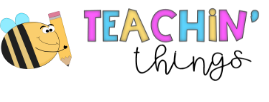Visual models help students understand abstract mathematical ideas. Using technology to provide visual models is an effective way to deliver instruction and provide all students with opportunities for success. There are limitless ways to add visuals to your math lessons and provide activities for students to work independently. This is where a teacher’s creativity and imagination comes into play. In the elementary grades, a lot of focus is put on mental math strategies. We want students to be able use mental math strategies to manipulate numbers in order to make math problems easier to solve. But they need the visuals to understand the strategies and calculate mentally. Some students will get it quicker than others, but all students benefit from visual models.
Let’s talk about the mental math strategy “make a ten to add”. This strategy is used to make it easier to add more difficult number sentences, like 6 + 9 or 7 + 5. By the time this strategy is introduced, students have done the work to learn that 10 is a friendly number and it’s easier to solve an addition problem when one of the addends is 10. But to just turn 6 + 9 into 10 + 5 is very abstract. Using visuals and letting students see the strategy in action gives them a greater chance of successfully moving from the abstract to the concrete.
I love coming up with ways to engage my students during math lessons. Using PowerPoint lessons and Google Slides activities with virtual manipulatives, I can offer effective, interactive instruction that textbooks just don’t provide. And it’s so much fun to be creative with the visuals. You can use current themes, times of the year, or anything else related to what is going on in your classroom to decide what visual models you will use. Visit my Teachers Pay Teachers store to see some of the ways I have incorporated visual models into my activities.

